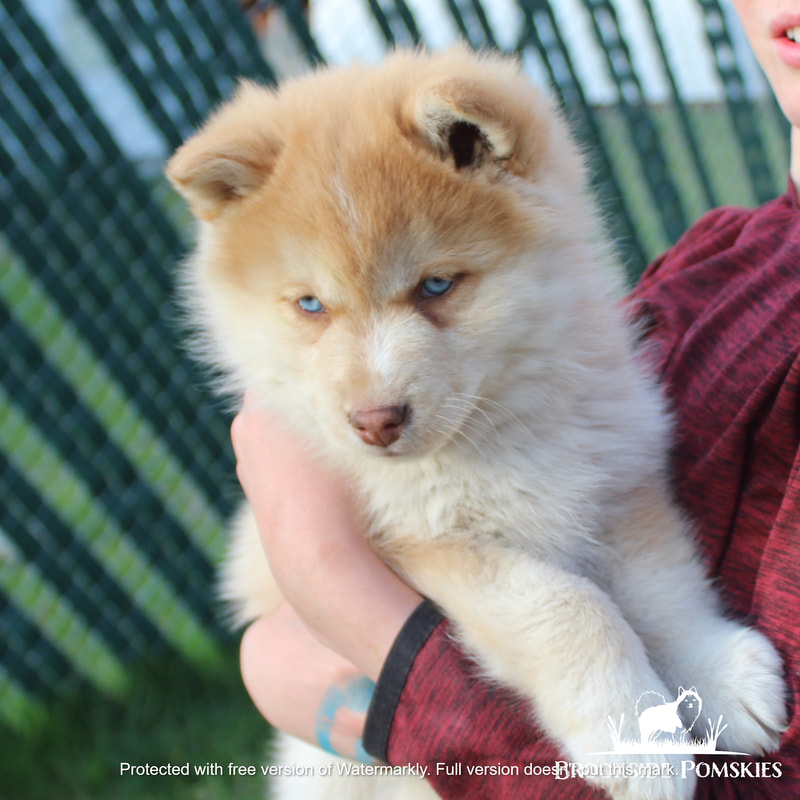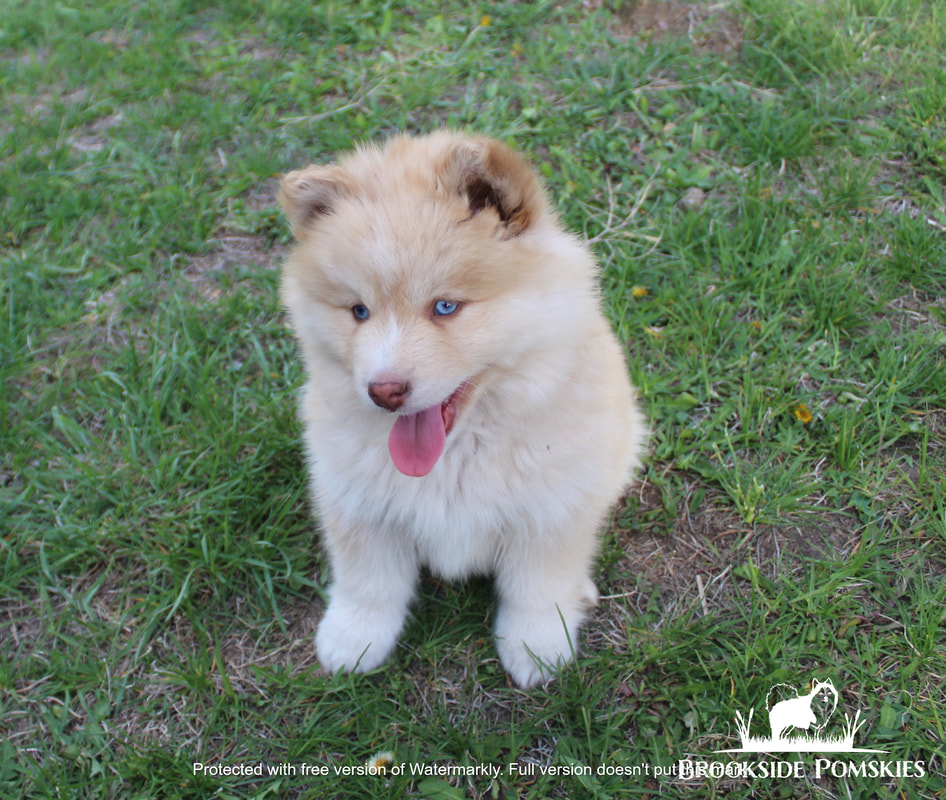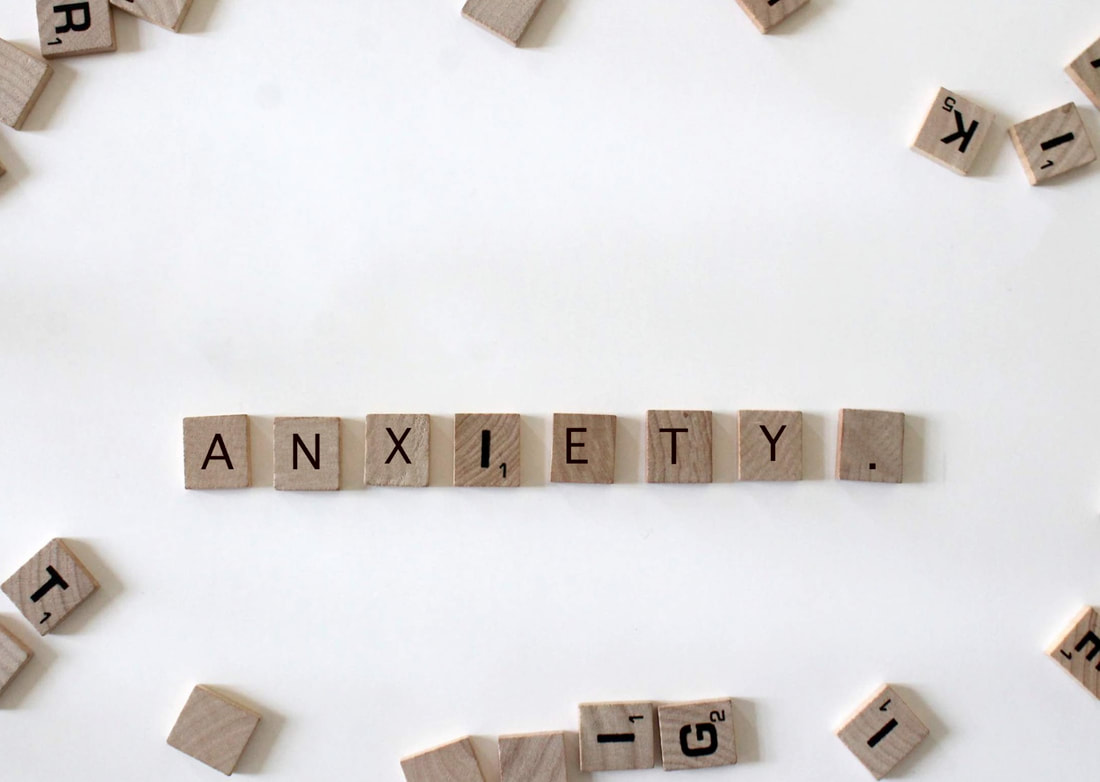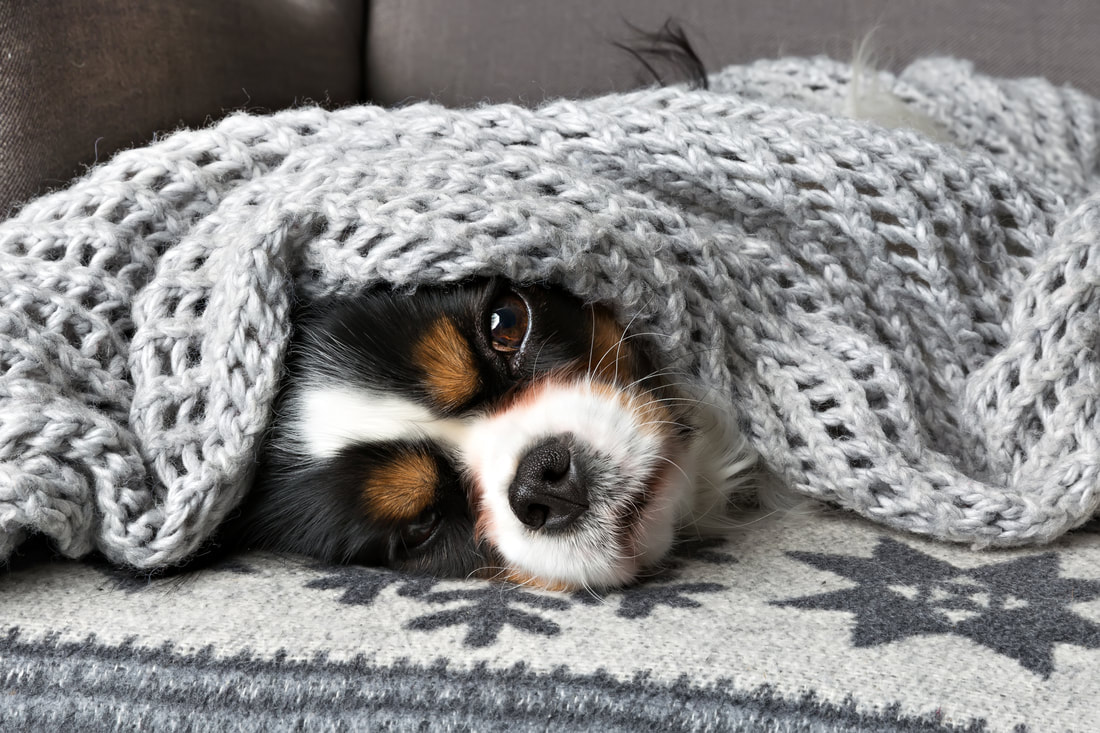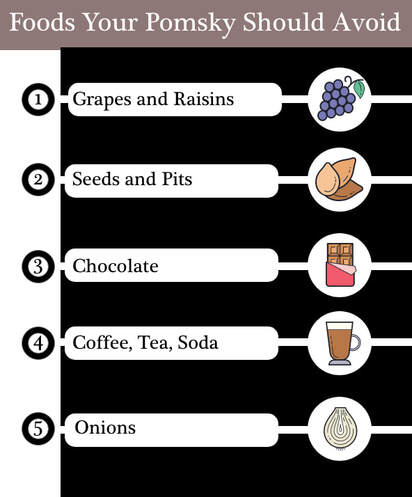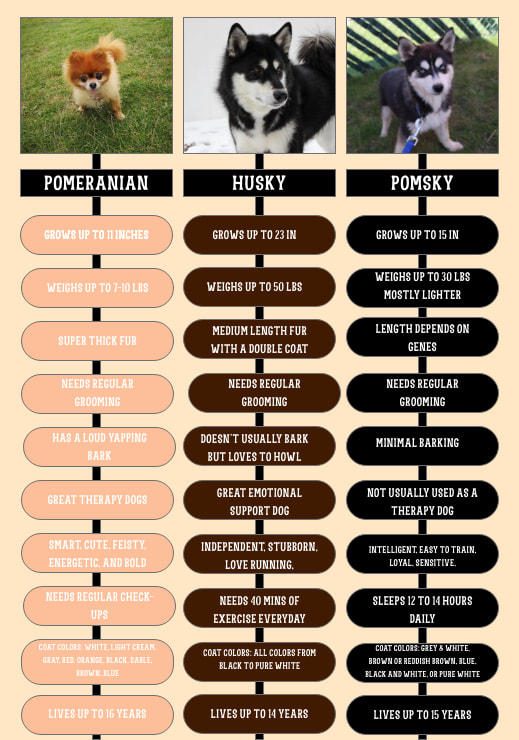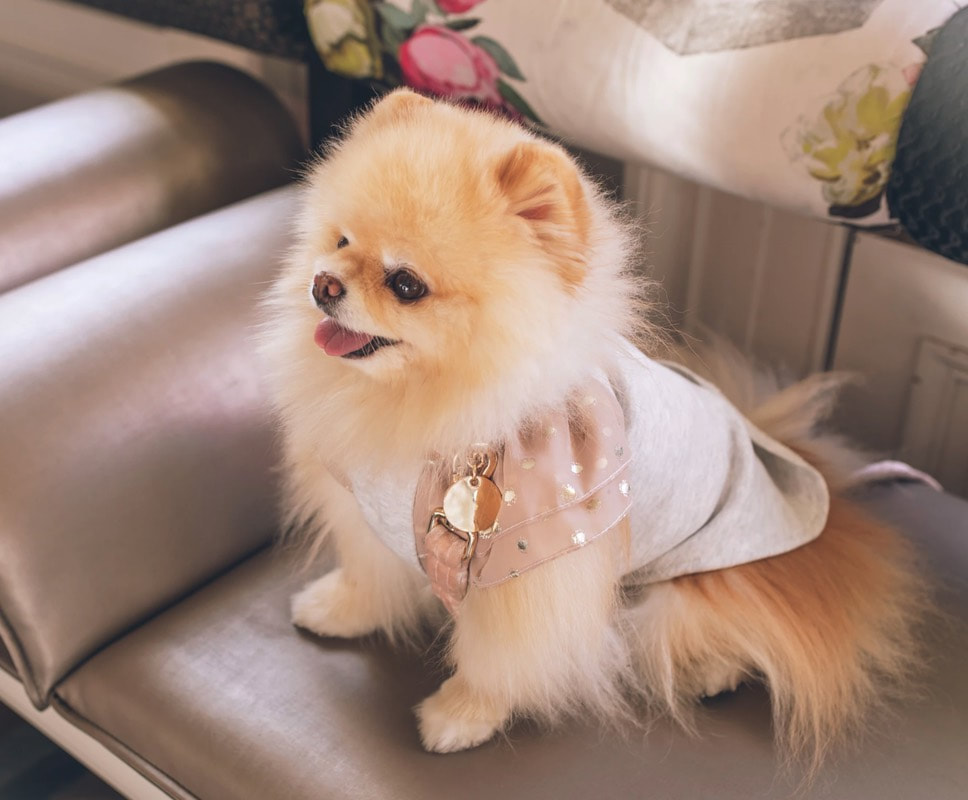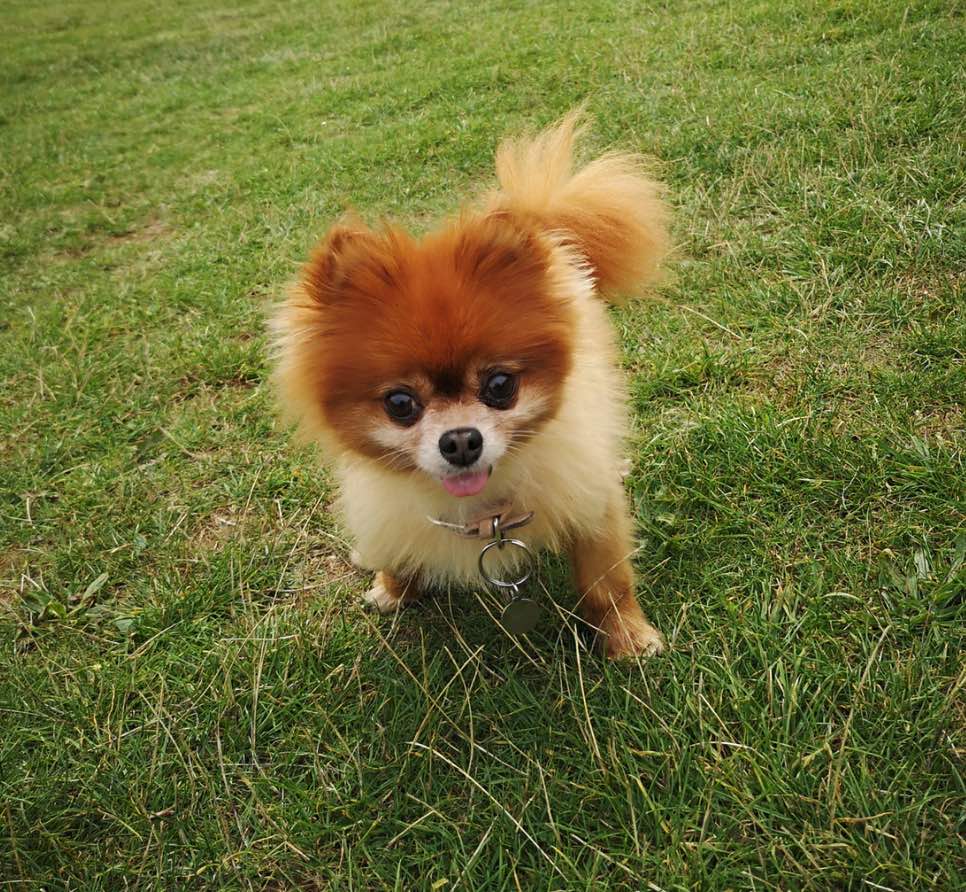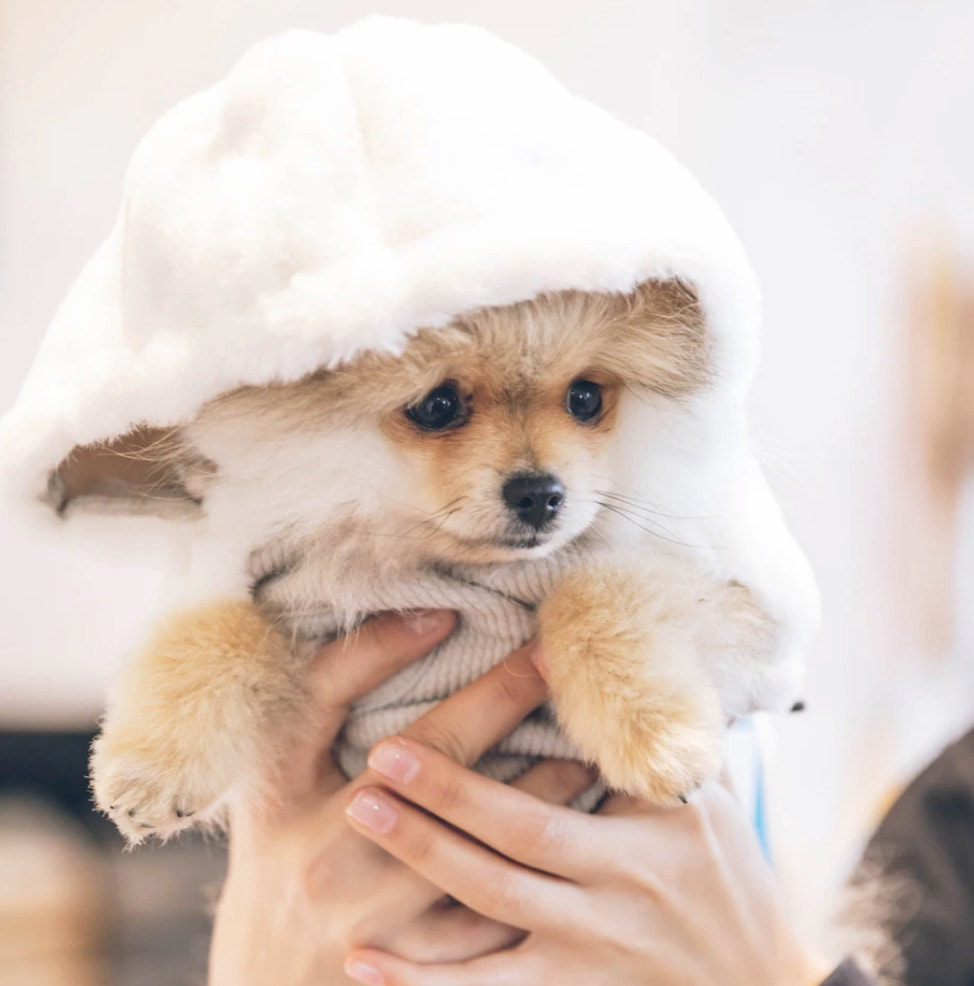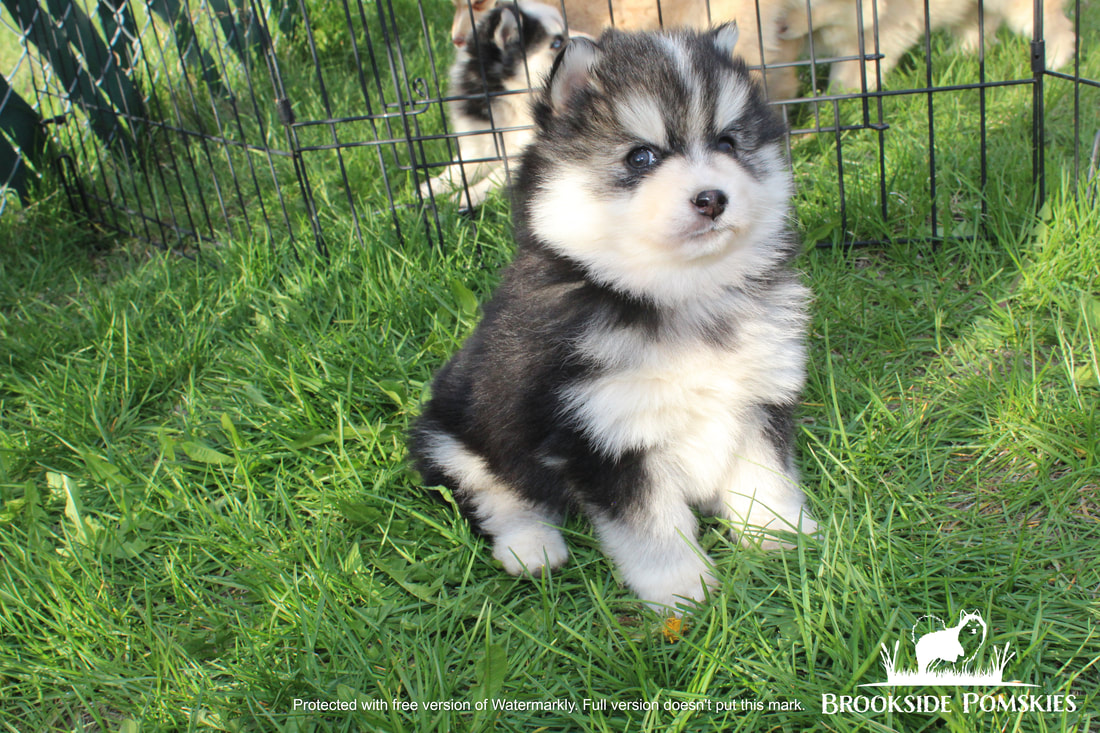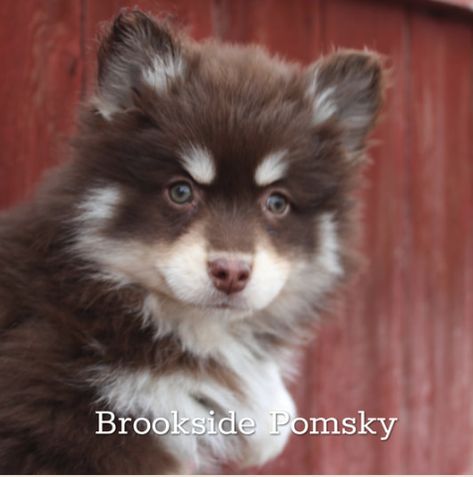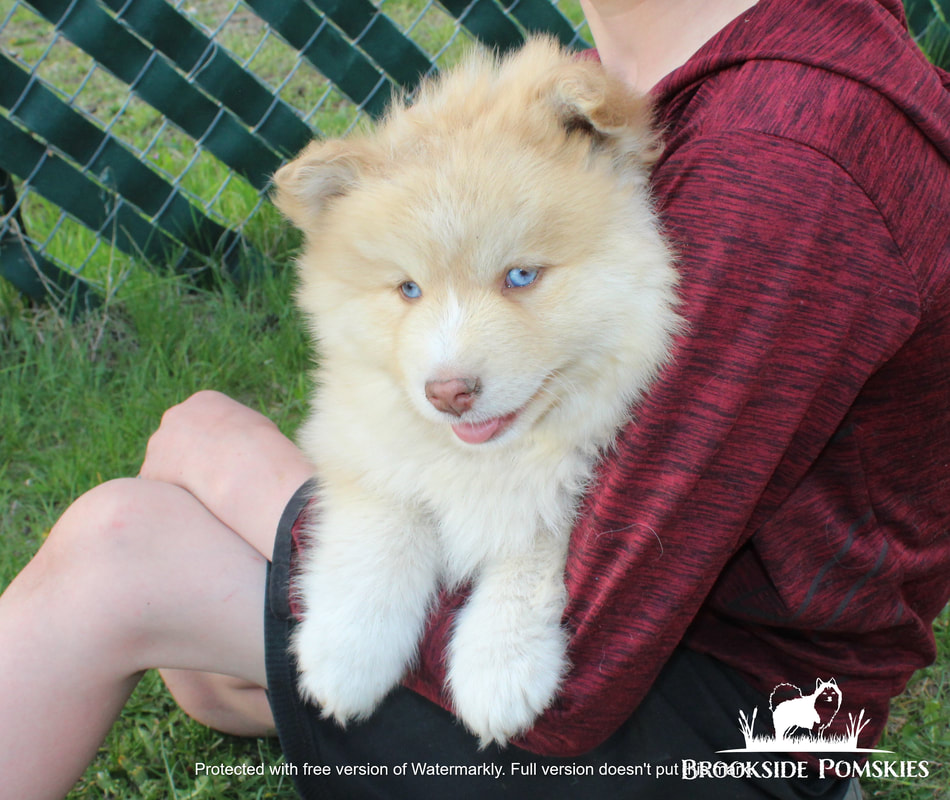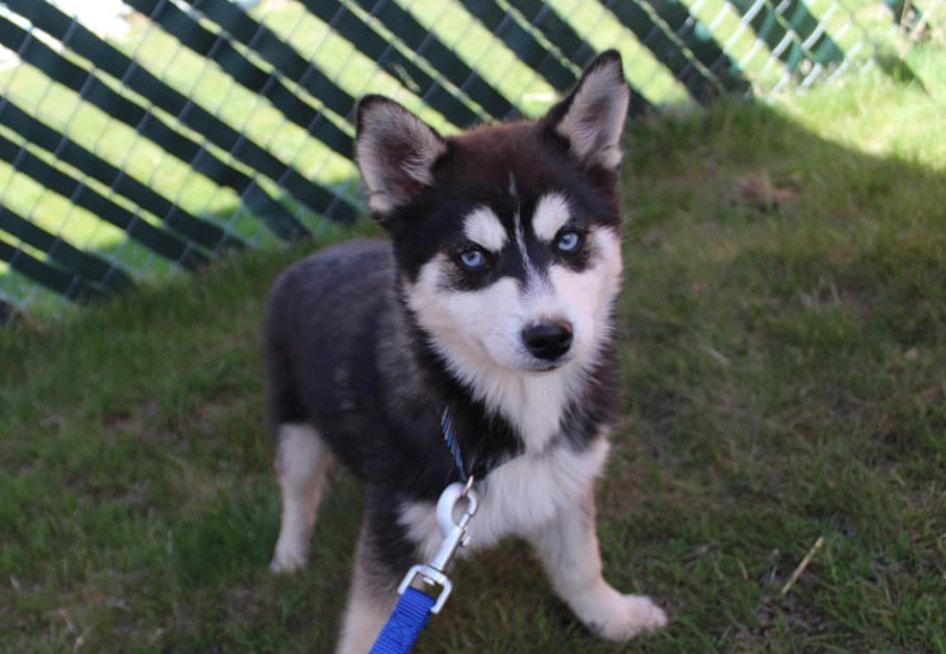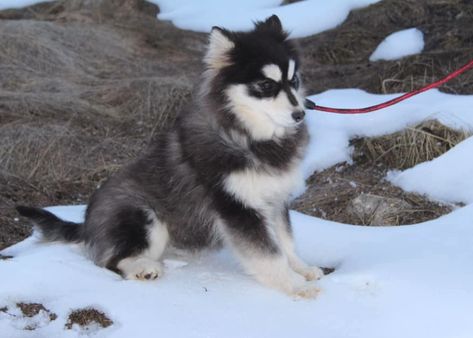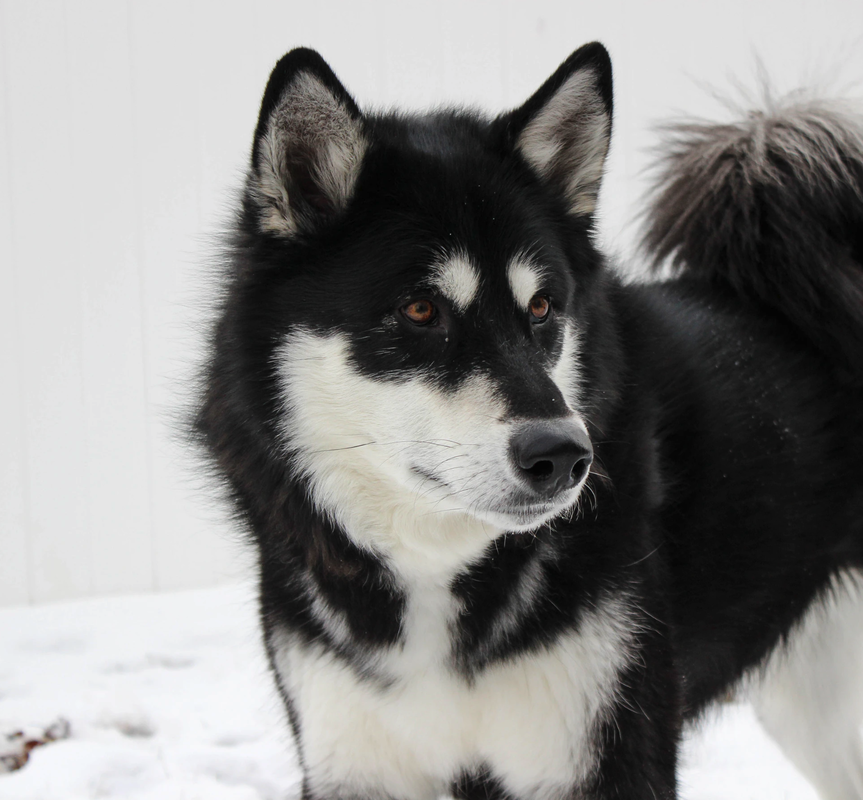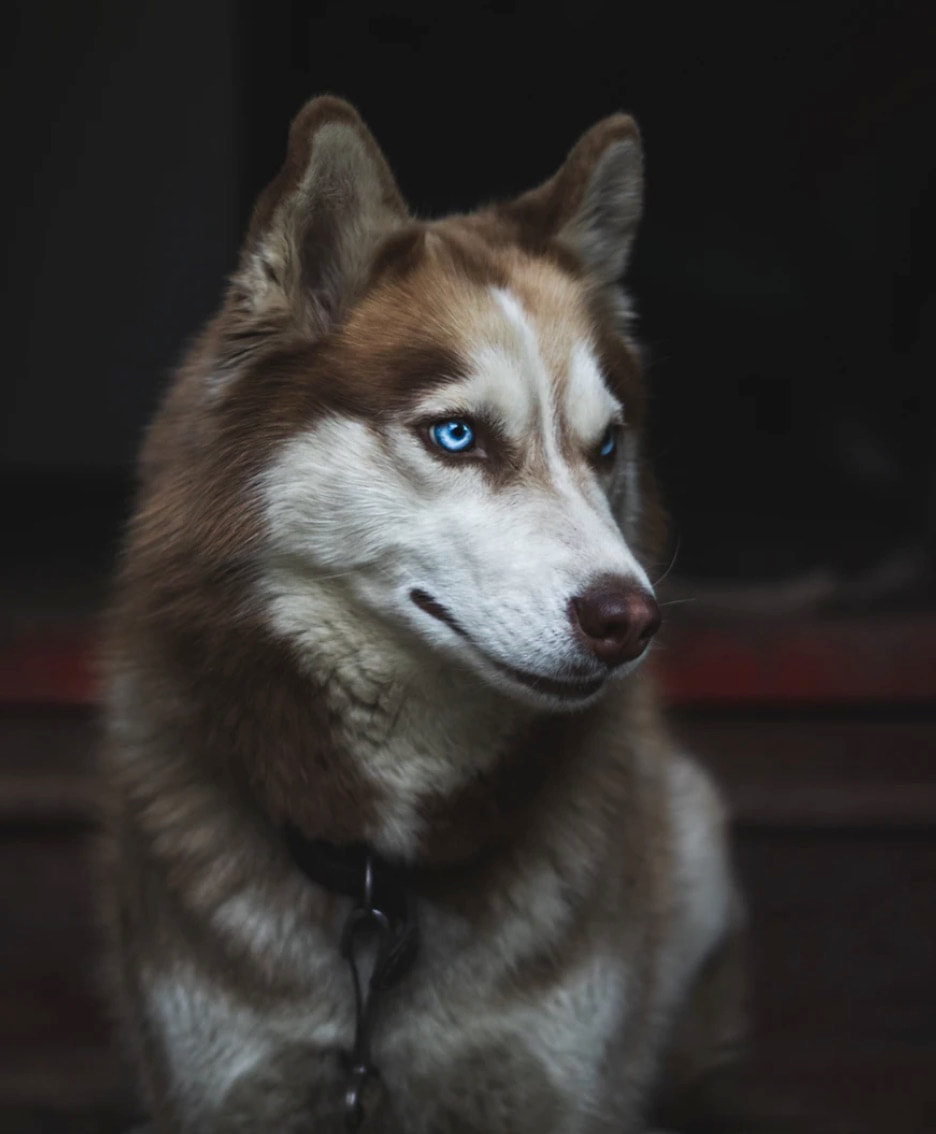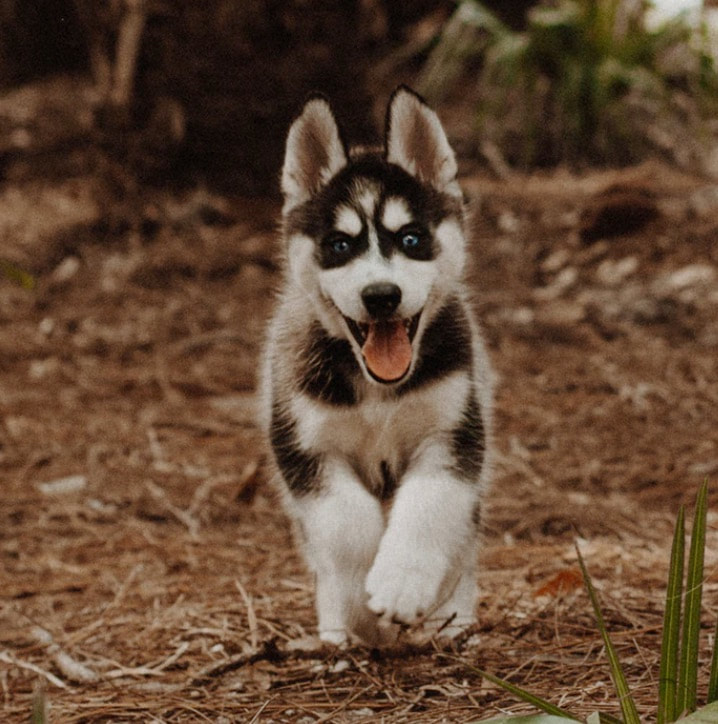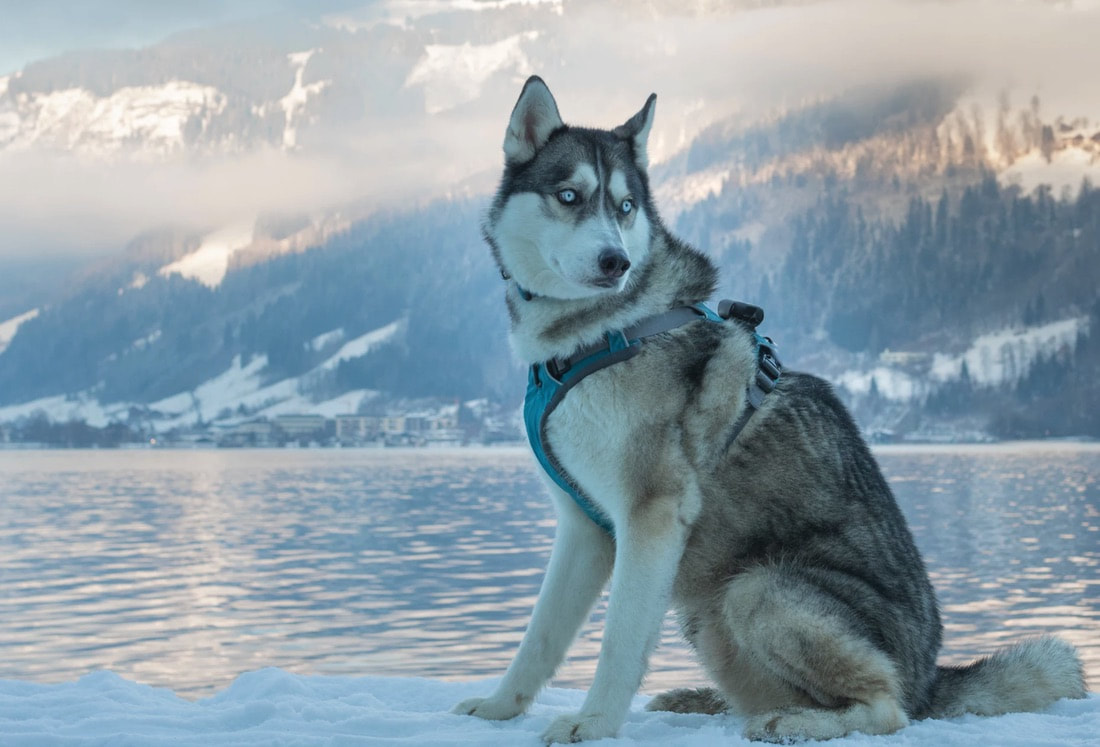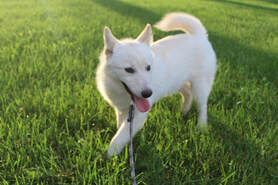|
When a Pomsky gets separated from its home and parents, it can cause separation anxiety. Separation anxiety doesn’t just happen for a Pomsky. It’s also common in most household pets. Don’t be alarmed; there’s a cure. Helping your Pomsky feel at home and feel loved is going to take some time and patience, but it will catch up to you soon, don’t worry. What are the symptoms of Separation Anxiety?If you notice any of these symptoms your pup could be suffering from separation anxiety. The symptoms include: Howling or barking excessively, repeated escapes, scratching or pawing on the door to return home, biting and chewing. What are the Causes of Separation Anxiety?Knowing precisely what is causing your pup to have anxiety is the best way that you will be able to fix it. If you can correctly find out what is causing your pet to feel lonely, you can use the tips that fit the best with that. Because there are so many various causes of separation, we will go over the most common causes. Most causes can be easily identified and often resemble a child’s separation anxiety. You may not be able to be home with your pet as much as you would like to. If your Pomsky was used to having a companion with them during the day, this might be causing the anxiety. This can be easily cured through time or including another playmate into the family. If you achieved your Pomsky through a shelter or home, they might have had a traumatic experience that might relate to being adopted into your home. This can go away with continued love and affection for your pup. The most common type of separation anxiety is from a change of routine and schedule. If they are used to bigger meals and more exercise and having a strict schedule when they eat, that might be why they are suffering from separation anxiety. This can cause your Pomsky to be whiny, have excessive barking, and lose sleep at night. How does your pet notice when you change the routine? Just like most humans, they need to be able to rely on the things around them to be the same each time. If you are on a schedule at your home, you know that even one change can cause stress to your body and also make you lose sleep. Routines become apart of their lifestyle, and their body gets used to what always happens. Call the previous owners to see if there is something specific you have changed in their routine to see if that can be causing the anxiety. Steps you can take to reduce Separation AnxietyHave a Home EnvironmentMake sure that your Pomsky feels at home by giving them the perfect amount of love and attention. You can also help your dog feel at home by making sure they have a specific place to sleep and by giving them toys and dog essentials that belong to them. Include Exercise and ActivitiesAs we said in a previous paragraph, one of the common forms of separation anxiety is when a puppy doesn’t have the same routine or receives less attention. If you want to fix this, you may need to start including more personal playtime with your Pomsky. Go for a walk or exercise outside by playing tug-a-war or fetch. Always give them about an hour of your attention every day and provide them with something to focus their time on when you can’t be there. Give them something to do while you are at workIf you are going to be out of the house while your Pomsky is there, you need to have a way for them to occupy themselves. Other than taking naps and staying in a cage. Sometimes just giving them a playmate is enough. If they can have another pet with them while you are away, they won’t feel as lonely and will have more love for you when you come home. If you have a toy that you can unassemble, fill it with Peanut Butter to keep them entertained. Giving Your Pomsky HopeSometimes the separation anxiety doesn’t come from missing their old family but comes from missing you. If your Pomsky is known to wait by the door until you come home or is lying down while you are away, that is a sign they miss you and are waiting for you to go back. Giving them hope that you will return is always an excellent way to help them with their anxiety. Grab an item you recently wore or an object you know carries your scent and give it to your Pomsky while you are away. Make sure not to make it a big deal when you arrive or leave because this can make them miss you more and have more significant anxiety while you are gone. ConclusionIf you still have a problem with your Pomskies separation anxiety, go to your local vet and ask them to examine your pup. Ask him if there are any medications you can give your puppy to help. If you are uncertain about putting your dog on the medication, you can also try hiring a pet sitter for when you are away. Pet sitters can give your dog love when you can’t be there and keep them entertained so they won’t continue having anxiety.
If you are interested in adopting a Pomsky Puppy you can go to our available puppies page to have a look at some of our available Pomskies or you can fill out an application. Thank you for reading our article. Have a fantastic day and check out our blog posts if you want to know more facts or helpful tips about the Pomsky breed.
1 Comment
How much sleep should Pomskies get?Pomskies, like most dogs, take a lot of naps during the daytime, sometimes the total amount of sleep they get can be up to 14 hours each day if you include the naps. If you are having difficulty with your Pomsky getting sleep at night, there could be things inside their routine that are causing them to lose that sleep. Pomskies have lots of energy and excitement, and they are super active during the day, which usually helps them get more sleep during the night. If your Pomsky is not getting the rest it needs, we can help! The list below includes a few things that may be causing your Pomsky to lose sleep and what you can do to help them. Not enough exercisePomskies need exercise as a way of releasing their excitement and energy. Without the proper amount of exercise, your Pomsky can get tired more often throughout the day, and energy may start to build up during the night. If your Pomskies seem to be sleeping a lot during the day and is only having trouble during the night, this may be why, and they will need to have more routine activities to stop this from happening. Exercises, such as running around the house or chasing a toy, does not count as an activity. Your Pomsky needs to go on a walk or be able to get some real exercise outside of the house. If this is the reason your Pomsky is losing sleep, you will notice some boredom or sleeping throughout the day. To fix this, you will need to get some equipment that can keep them moving around or take them on a walk at least once a day. Usually, it is more beneficial for your Pomsky to have an activity with its owner so that your puppy can feel more love and feel fulfilled. SicknessIf your Pomsky is acting more tired than usual and is taking naps 1 hour in between each other, your Pomsky may be sick and could even have hypoglycemia. Hypoglycemia is a sickness that is most common in dogs before the age of 6 months. To ensure that your puppy does not have this type of illness, rub some honey on their gums, and if they start to get more hyper and less tired, that may be a sign to take them to the vet. Other types of illness can also be the reason that your puppy is getting more or less tired. To test this out; you may need to take your Pomskies temperature and try playing some games with it. If your Pomsky doesn't come when you call and continues to lay down, try giving them a treat or holding their favorite toy when you call them. If they continue to stay where they are and look tired, that could be a sign; you need to take them to the vet. Once a Pomsky gets older, it will start getting tired more quickly and will take more naps throughout the day. This shouldn't be a sign for concern unless the Pomsky is whining or having a hard time sleeping at night. MedicationIf you've put your Pomsky on some medication and they are getting sleepy more frequently, it could just be the medication. Check with a vet as soon as possible. See if it is a common side effect or if they should be taking a smaller dosage. Things that can help your Pomsky stay asleep at nightHaving a personal room or areaLeaving your Pomsky home while you are at work means that they are left without a companion. Without something to keep them occupied and energetic, they can start falling asleep more while you are away, and that could cause them to have less sleep during the night. If you want to fix this, I suggest you have a separate room for them to playin that includes extra toys and equipment. You can also try giving your dog a buddy or another pet to play with during the day while you can't be home. A buddy can help your Pomsky get energy and exercise while your gone. Having a ScheduleWhen you are home or away, it is wise that you have a specific schedule with your Pomsky. When you do this, your Pomsky will fall into a routine and know exactly what time you expect them to fall asleep at night this may even help if you're having trouble with their whining. If you have a schedule, you can also make it easier to keep them asleep all night, not including their potty breaks. Here are a few things you should include in your schedule. Feel free to rearrange these as you'd like and create the time frame that works for you.
When you are doing your best to keep your Pomsky clean and fresh there are a lot of things to keep in mind. Keeping your Pomskies skin and coat healthy means regular cleaning but that can be tough. Minimize your Pomskies coat problems by becoming aware of your Pomskies requirements. You can follow these essential guidelines: Bathing Your PomskyBathing your Pomsky too often can remove some essential body oils. Daily baths are not practical or advised. It is, however, advised to give your Pomsky a bath once every 3 weeks. What do you do if your Pomsky becomes dirty within those 3 weeks (which is highly likely)? Luckily, there are simple steps you can take to keep your Pomsky looking clean and smelling nice in-between its baths. Many of the methods to keep a Pomsky clean also have added benefits that contribute to good health, so this is definitely a win-win. Brushing Your Pomsky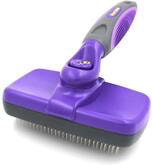 Make sure to brush your Pomskies coat every 2 to 3 days. This will help keep your Pomsky clean by removing any dirt and debris that get stuck to their fur. This will also remove any dead hairs and which will help your dog continue to smell fresh. Dead hairs that remain in the coat can be coated in with body oils, and if not removed will start to smell. Pomskies shed quite a lot and therefore should be maintained regularly. If your Pomsky has medium to long hair, a pin brush with polished tips will work well. If your Pomsky has a short puppy cut, a lightly compacted bristle brush is the way to go. Cleaning Your Pomskies Ears The Pomsky breed has pointy ears that put them at an advantage compared to other dogs with droopy ears but keeping them maintained is still crucial. Make sure to clean out your Pomskies ears 2 to 3 times a week because excess wax can accumulate fast. Below are a couple of different options for keeping your Pomskies ears clean. 1. Regular use of ear wipes. With a good ear wipe, you can keep your pomskies ears clean before any wax or dirt make it down into the ear canal. You may wonder if you can use a general grooming wipe for this; but, there are 2 main reasons that ear wipes are preferred over general wipes: 1) Wipes designed specifically for the ears contain witch hazel which is ideal to clean the ears 2) These wipes are only semi-damp and therefore do not introduce unwanted moisture into the ears which can lead to infections. Every other day or at least once per week, take an ear wipe for each ear and clean the entire inner ear (try not to push too far down into the canal). 2. Use an ear cleanser. This is a liquid that flushes out the ear canal. If your Pomsky is prone to ear infections, cleaning the ear canals every 2 to 3 weeks with a quality ear cleanser can be quite beneficial. Place a few drops into the entrance of the ear canal, massage the base of the ear for 1 minute, and then use a clean piece of gauze, a cotton ball, or an ear wipe to swipe up any goop that comes out. Cleaning Your Pomskies Face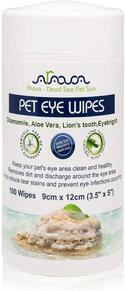 Using Eye wipes is an excellent way to wash your Pomskies face and get rid of any burgers attached to their fur. Baths alone are often not enough to reduce facial staining. Most stains on the face occur under the eyes and around the nose and mouth. In order to decrease facial staining, it is wise to wash your Pomskies face with a face wipe or cleanser. Most of the stains around the eyes are due to conditions including additives in food, allergies, or partially blocked tear ducts. Even natural tears can stain hairs if a dog drinks tap water that contains a high mineral count. If your Pomsky is eating kibble that contains artificial coloring, or eating or drinking from vividly painted plastic bowls those may also cause stains as well. You can reduce stains by buying kibble that has no artificial coloring, use only stainless steel or ceramic bowls. Make sure you also have any additional allergies or unnecessary tearing diagnosed and managed. Do not feed your dog any unfiltered tap water. Besides the possibility of extensive mineral content, tap water contains hundreds of contaminants. It even contains traces of prescription medicine and known carcinogens. Instead of using tap water, use bottled spring water or invest in a filtering method. Another way to reduce stains is by routinely wiping you Pomsky’s face. Using a fresh wipe each time, swipe over and around the eyes, as well as down the cheeks, around the mouth, and over the chin if needed. When analyzing a healthy diet for your pomsky, it is crucial to think about how often you should feed them, what times are most beneficial, and what foods you should avoid in your pomskies nutrition. How often should you feed your Pomsky?2-6 month old puppies- Each pomsky puppies should be fed 3 meals daily during this period. You may need to include snacks as well in between meals. 6+ month old dogs- Your pomsky should be fed 2 meals daily during this stage of their life. Giving them snacks between meals is recommended as well. You can plan on giving them snacks between their meals during this time as well. How much should I feed my Pomsky?Although the response to this question depends on the type of dog food, whether it's wet or dry, the activity level or your Pomsky, and so-on, we have a few guidelines you can follow to start with, and then you may change it based on the needs of your dog and ingredients of your dog food.
Should I feed my Pomsky Wet or Dry Dog Food?Foods that are unhealthy or poisonous for Pomskies
Pomskies are great dogs by nature, but when they whine, it’s hard to know what to do. That’s where we come in. Training your Pomsky to stop barking and whining is easier than you think as long as you have patience and are willing to show lots of love and affection when getting there. In this article, we are going to tell you the top 5 things you can do to get your Pomsky to quiet down and whine less often. Before we get started, it is always wise to know that if your Pomsky has just started to whine and it is very uncommon for them there may be a medical concern and you should always check with your vet to make sure they are okay. For starters you will want to search around the house and check the dogs surroundings. If you notice something unusual such as a package that your dog could have gotten, it is likely may may have eaten something that could be harmful to their body. However, If you've recently bought your Pomsky within the last month it is very common for them to whine, so don't be alarmed. The time period that your Pomsky starts to whine will be between four to six months, and that is when you will need to implement these actions. Older dogs may be harder to train. Give your dog plenty of exercisesGiving your Pomsky enough exercise is a miracle worker as far as whining. If you give it enough exercise throughout the day, your Pomsky will feel loved and accomplished and will be a lot calmer. Professional trainers have stated that giving your dog exercise that includes time with their owner will increase their satisfaction. Keep your Pomsky on a scheduleSet up a plan for your Pomsky. This will help them to know precisely when and how they will receive their food and exercise. If you are strict with their diet and routine, they won’t feel the need to whine in order to show you they are hungry or need training. Most puppies will wine when they feel like they aren’t getting enough of something or when they want more attention. If you start giving them more attention one day, but slow it down throughout the rest of the week, your Pomsky will feel like you’ve forgotten about them and try to regain the care they had before by whining. Give your Pomsky a MassageJust like humans, dogs sometimes feel stressed or anxious, and having a relaxing, meaningful massage is a great way to relieve some of those stress hormones. To get them to calm down, try rubbing the parts of their back that seem tense or stiff. On this topic it is also important that you never reward their whining behavior. If you begin to massage them while they are whining they will continue to whine in order to receive what they want. Instead ignore the whining and once they stop immediately reward them for stopping by giving them a massage or treat. Healthy DietGiving your pomsky a healthy nutritious diet will help tremendously when you are trying to train and calm down your dog. If your Pomsky continues to whine or bark throughout the day, there might be something in its food that is making it hyper or overactive. Make sure to go to a vet if you have any concerns with allergies or to see of any issues your dog may have. If your dog does not receive the right amount of protein that can also make it hyperactive. Use foods that have ingredients like fish, white rice, and lots of meats. MedicationSome dogs require medicine to help with their digestion or other issues going on inside their body. Talk to a vet and see if there are any prescriptions that you can give your dog to help them calm down. If the medicine you are using is causing them to sleep more throughout the day or if they seem less active than before you should stop taking that medication immediately and consult with your doctor. At Brookside Pomskies, we make it our goal to give our dogs the best health possible and continue to do whatever we can for our dogs. Your satisfactory is our goal. If you are interested in buying a Pomsky puppy from us, you can visit our available puppies on our website or fill out an application. Thank you for visiting our site have a fantastic day!
How does Pomsky compare to the Pomeranian and Husky breeds?Pomeranian Pomeranian dogs are purebred, while, Pomskies are a mixed breed between a Pomeranian and Siberian Husky. To be a purebred Pomeranian, it's ancestry would have to be completely Pomeranian and have no other type of dog blood inside of them. The Pomeranian breed has been around for more than 2,000 years. They are said to have descended from the German Spitz. Resources suppose that they got their name from a place called Pomerania which is placed in northern Poland and Germany. Temperament and Characteristics: Pomeranians are very active, friendly, talkative, super lively, very playful, sensitive, and smart. They also like to bark a lot so keeping them on a schedule will help with the noise. Because of their intelligence, they are very easy to train. Pomeranians dog breeds have a lot of social needs and never like to be left out of activities. One of the great things about this breed is they also have a low tolerance to nipping, chewing, and biting. Coat Colors: White, Black, Gray, Brown, Red, Blue, Tan, or Orange. Life Expectancy: Pomeranians are known to live anywhere from 12 to 16 years. Sleeping needs: Pomeranians sleep anywhere from 12-14 hours daily. Average Litter Amount: The Pomeranian breed has an average of 2-5 puppies per litter. (They can usually have a litter at least once per year. ) Here's a few pictures of some Pomeranian dogs. Enjoy :) Pomskies The Pomsky breed is believed to be founded in 2009 and is principally bred by artificial insemination to avoid any complications. In 2017 it was known as the most popular designer dog. Temperament and Characteristics: very intelligent, easy to train, sensitive, loyal, protective, playful, very social, average tendency for nipping and chewing, and doesn't like to be left alone. Coat Colors: Grey & White, Brown or Reddish Brown, Blue, Black and White, or Pure White Life Expectancy: Pomskies are known to live anywhere from 12-15 years of age. Sleeping needs: Pomskies sleep on average between 12-14 hours daily. Average Litter Amount: A Pomsky has around 2-6 puppies per litter, and can conceive once a year. Here are a few pictures of some Pomskies, enjoy :) Siberian Huskies The Siberian breed is known to have been bred in Northeastern Asia. These amazing dogs were used as family dogs for protection and companionship. They were also used as sled dogs for the Chukchi people. Fun fact: The Siberian Husky became very popular after a team of Siberian Huskies went on a serum run after a horrible disease spread throughout Alaska. These dogs were able to sled a lifesaving serum from 658 miles in only five and a half days, which saved the lives of many people in Alaska. Temperament and Characteristics: The Siberian Husky is easy to train, very playful, sensitive, super loyal, loving, affectionate, very social, loves to bark, defensive, super adaptive to new lifestyles, and they do not like to be left alone. Coat Colors: White, Agouti, Sable, Red, Gray, or Black ( They are usually a mix of two of these colors) Life Expectancy: Huskies are known to live anywhere from 12-14 years of age. Sleeping needs: Huskies do not need very much sleep during the day. Average Litter Amount: A Husky has around 4-8 puppies per litter, and can conceive once a year. Here are a few pictures of some Huskies, enjoy :) Differences in Coat (Pomsky vs. Husky vs. Pomeranian)Pomeranians A Pomeranian dog has a double coat that consists of an undercoat and a topcoat. They come in a broad assortment of colors. Some Pomeranian's will have a particular color of coat but shed it off after their puppy years and then have a new color of fur. Their coats are usually long and thick. Pomskies Pomskies can inherit their fur type from either the Pomeranian or Siberian Husky. Their furs length, type, and color will depend on what gene becomes more prominent. Huskies The Siberian Husky has a double coat, an under coat and an overcoat. This helps it when the weather starts getting too cold or too hot. The Siberian Husky should be groomed at least once per day. This breed also sheds a lot and is even above average for dogs. Size Difference (Pomsky vs. Husky vs. Pomeranian)Pomeranian Pomeranian dogs are usually very small in size. They can reach 7 to 12 inches tall and weigh anywhere from 3 to 7 pounds. Pomskies Pomskies are average in size mainly, but the exact height is unknown. Both parents have different size comparisons, so it just depends on the gene they carry most. These dogs are known to grow up to 15 inches tall and can reach up to 40 lbs. The smallest Pomsky we've ever bred was 12 lbs and the biggest was 40 lbs. Huskies Huskies are very large in stature and can grow anywhere from 20-24 inches. They can also weigh anywhere from 35-65 lbs. SummaryPomskies and Pomeranians are very similar in nature and can even look very close in appearance. They are both very great dogs to have around the house and often make great friends. On the other hand Pomskies and Huskies are usually the most similar as far as appearance rather than size. Both the Husky and Pomeranian breeds are very stunning and make an amazing Pomsky breed. How does Pomsky compare to Siberian Husky?Siberian Huskies come in a variety of colors, so many that it would be hard to name them all. They even have some patterns and strikes that most other breeds don’t. Their colors range anywhere in between black and white, including copper, red, and sable. Because most Siberian Huskies were raised in the cold weather which is why their coats are very thick. Their fur is very straight and smooth, and just like Pomeranians, they have a double coat. Because the pomskies have double coats its recommended not to shave their coat or cut their undercoat. When you take your Pomsky to the groomer you should ask the groomer to only do a sanitary trim. An experienced groomer should know what this is. If this fur is shaved it can ruin their coat permanently. A pomskies double coat protects them from the sun as it does the cold weather. Pomskies have a few different types of coats, smooth coat, plush coat, and a wooly coat. |

